It has been a busy few months here at SP and we thought we’d post this newsletter of sorts. Here’s what we’ve been up to:
Since January, we’ve been working on researching and designing 10 new Challenge Prizes. We’ll post a few more details about this project when we can make it more public. This has been keeping Ana very busy for most of the year so far. Thankfully we’ve had the support of two fantastic researchers. The first, Matteo Farinella, was with us for phase one of the project and we are continuing to work with Matteo in his capacity as an awesome illustrator. For phase two, we are very happy to have Chloe Ambery on board, an almost-graduate from Imperial College’s Science Communications MA programme.
Marek has been spending quite a bit of time on Sequence Bundles, working with Joe Lau to get a web-enabled version of the visualisation tool online. Marek (with James K) also hosted the industry panel at the BioJS conference where we met a great community of people who are collaborating to make the next generation of bioinformatics tools.
Still thinking about great speakers at #biojs15 meeting—thanks @GenomeAnalysis @repositiveio @BiojsLibrary @yannick__ pic.twitter.com/zDjYYItIGT
— Science Practice (@sciencepractice) July 14, 2015Tempest has been working on an internal project to explore the potential of low-tech microfluidics for diagnostic applications and we’ve been having a lot of interesting discussions with a variety of researchers and companies. Tempest gave a talk about this project at a recent TEDx event.
James G has also donned the cheek microphone for a talk he gave about Science Practice at a recent event organised by the Knowledge Transfer Network.
.@James_Godwin_ @sciencepractice talks about citizen science + how citizens can help innovate @KTN_Creative #ND30yrs pic.twitter.com/gQClPHS6LS
— Dr. Mitra Memarzia (@mitra_m) July 3, 2015Lastly, we’ve been accepted onto Oxford Nanopore’s MinION Access Programme (MAP), which is enormously exciting. We are awaiting some essential supplies before we can fire-up the diminutive MinION sequencer, but we are looking forward to seeing what it can do first-hand. More soon!
Update 19/06/2015: Call now closed. Thank you to those who applied!
We are on the lookout for someone with a passion for technology and innovation to join our team over the summer!
- Location: 83-85 Paul Street, London EC2A 4NQ, UK
- Term: 3 months / 6 months
- Hours: Full-time
- Starting date: June 2015
- Salary: The internship will be paid, the rate will be negotiated with the successful applicant
In case you haven’t met us yet - we’re Science Practice, a design and research company based in London. We work across a variety of areas and collaborate with scientists to help put their research into practice. Whether we’re designing challenge prizes, prototyping microfluidic chips or creating new methods for visualising genetic data, we’re always looking at ways to integrate design principles with the processes and methodologies of science.
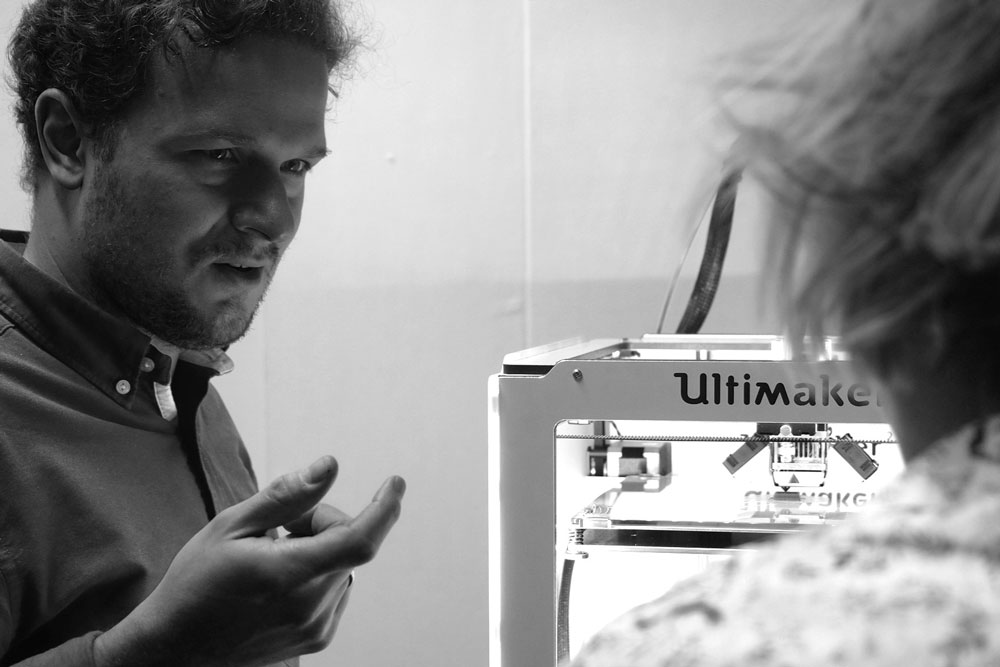
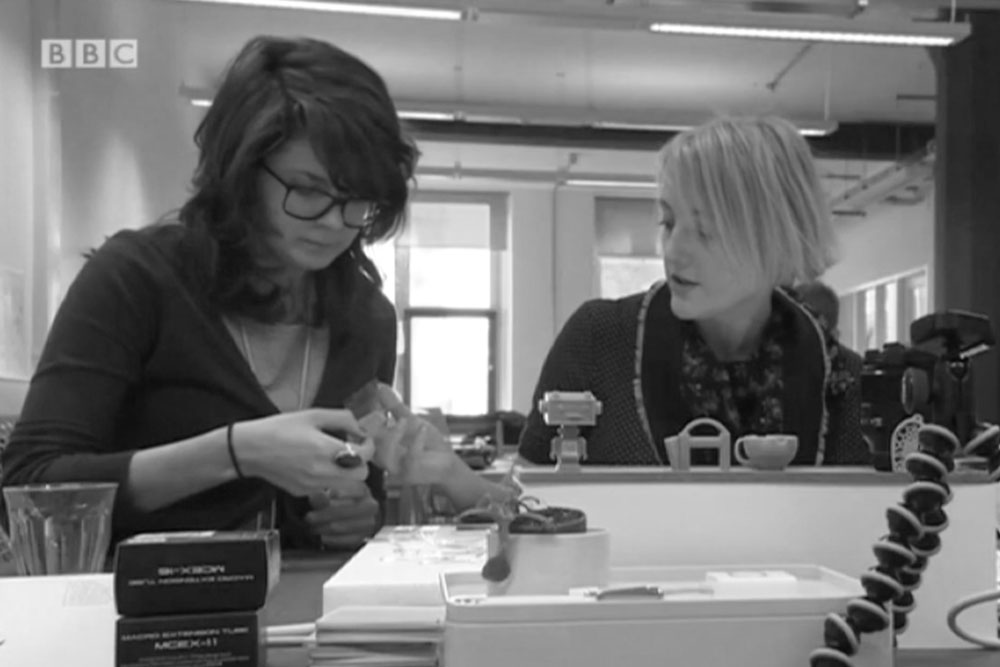
We are looking to recruit a recent graduate to support a project to create several challenge prizes. This is an exciting task that involves researching fields of science and technology such as robotics, cryptography and energy that could provide a solution to some of today’s most pressing problems.
We are looking for someone knowledgeable, inquisitive and passionate about new and emerging technologies and the potential they hold.
The role will involve:
- Supporting the team to research technological innovations and their impact on addressing social problems;
- Writing key research findings and helping prepare external project documentation;
- Supporting expert engagement work - including logistical tasks such as identifying key experts in a specific field and arranging interviews with them, as well as taking part in the interviews and synthesising the main ideas;
- Working closely with a team of international partners in designing the structure of several challenge prizes;
- Completing important and often time sensitive ad hoc project tasks.
The person we’re looking for:
- Passionate about technology and its potential for social impact;
- Interested in innovation and tools for supporting innovation such as challenge prizes or competitions;
- Strong academic credentials - recent graduate of a Bachelors or Masters (preferably in a technology related degree), with a First or 2.1;
- Strong research skills - ability to understand and synthesise complex information quickly;
- Excellent written and verbal communication skills;
- Highly organised, with a close attention to detail and high standards of accuracy;
- Efficient, self-motivated and able to manage priorities to meet deadlines;
- Able to work on location in London, UK;
If you’re interested in applying for this role, please send an email with your CV and a brief cover letter to Ana at af@science-practice.com. Thanks and looking forward to hearing from you soon!
We’d like to introduce the newest addition to Science Practice, the MinION:
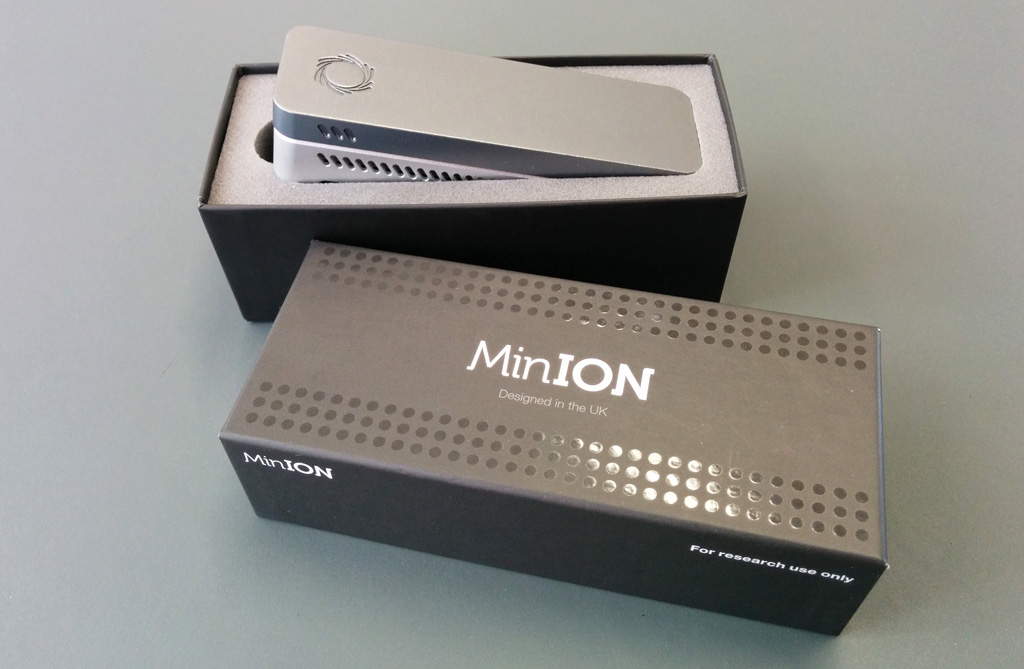
The MinION pocket-sized genetic sequencer produced by Oxford Nanopore
The MinION is Oxford Nanopore’s device for real time analysis of biological molecules such as DNA, RNA or proteins, in other words our very own genetic sequencer! We were given a MinION as part of an early access program when we attended Oxford Nanopore’s London Calling 2015 conference:
Christmas! #whatsinthebag #NanporeConf pic.twitter.com/qKgAMjSWs9
— Science Practice (@sciencepractice) May 14, 2015We were at the plush Altitude London venue on 14th and 15th May to hear all about how the MinION works and what it’s being used for, like sequencing Ebola to trace infections. We also presented one of our own projects which might incorporate the MinION: a toolkit for prototyping microfluidic diagnostics.
The format of our presentation was a Pecha Kucha (20 slides for 20 seconds each) pre-recorded as a video for a rather intriguing collective-noun: a “fleet of iPads”:
Last night at #NanoporeConf with @Doctor_Tempest’s Pecha Kucha playing on a fleet of iPads + happy faces. pic.twitter.com/q26YavYKSm
— Science Practice (@sciencepractice) May 15, 2015The MinION fits right in at our office, and we think it might be the first genetic sequencer in Shoreditch?
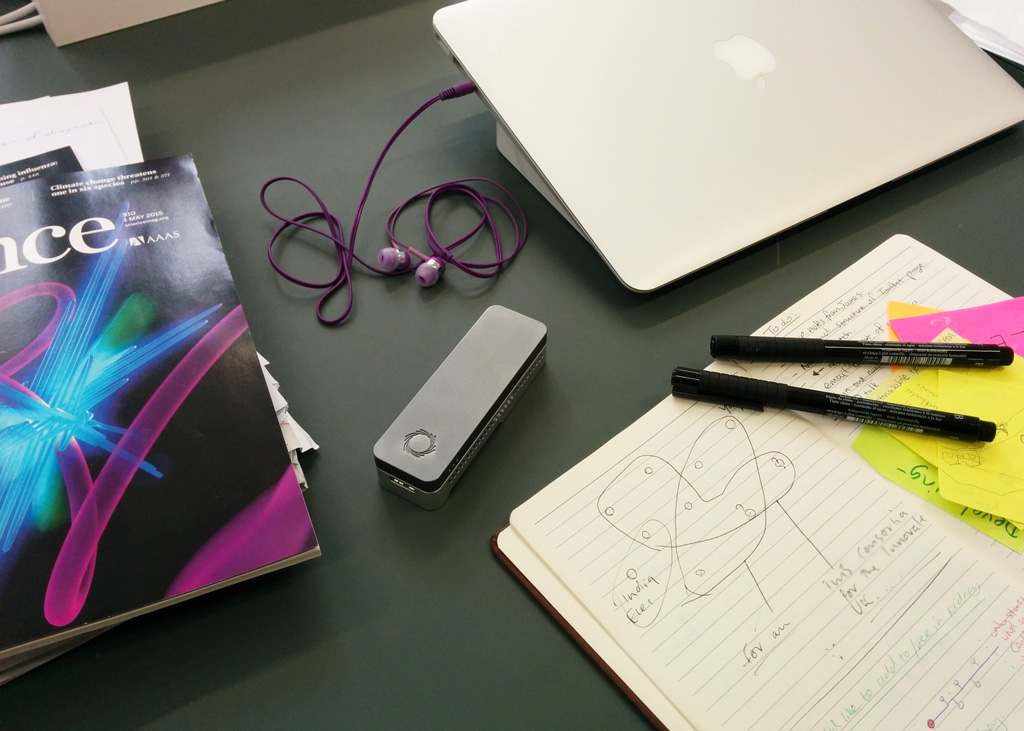
The MinION making itself at home in our office
It connects to a laptop via USB and houses a flow cell containing the sensing technology: a membrane spotted with nanopores which act as single-molecule detectors. Each nanopore pulls a strand of DNA across the membrane, creating a unique current signal for each base pair.
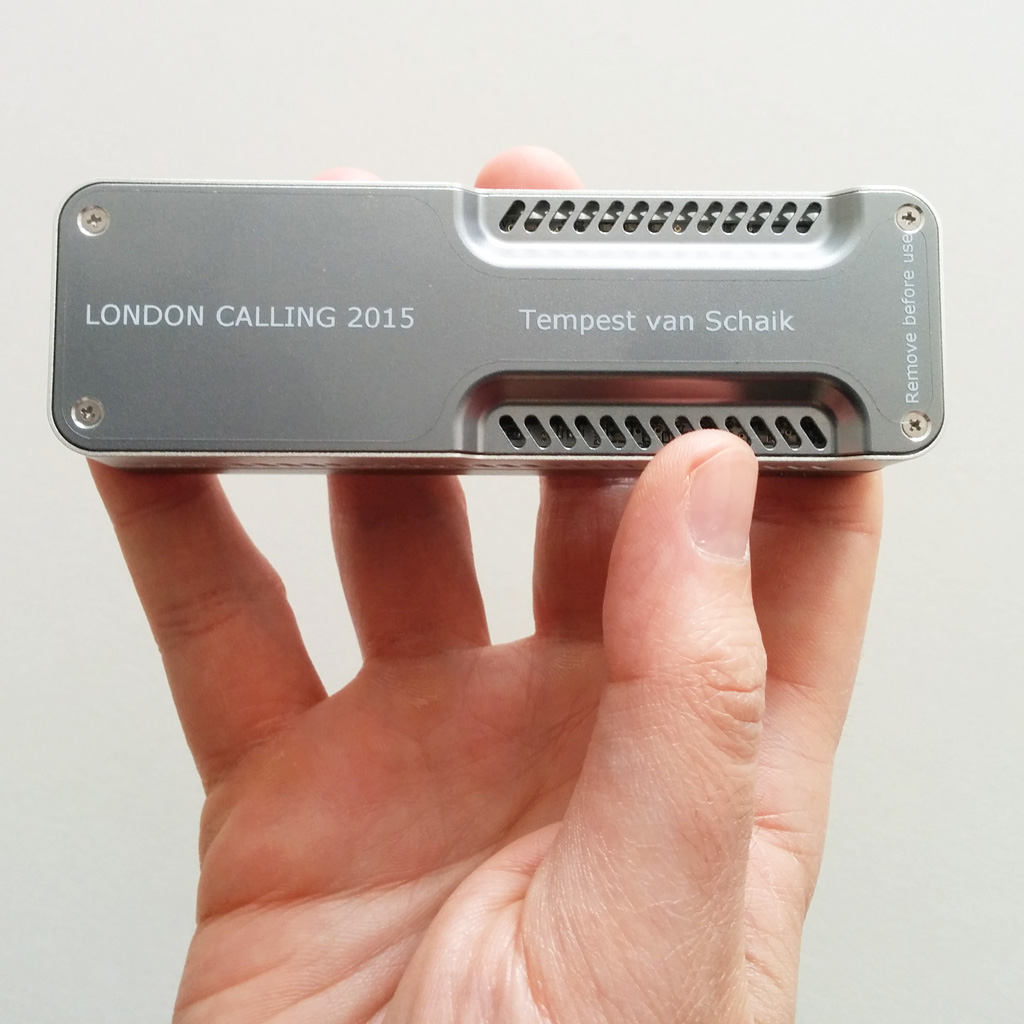
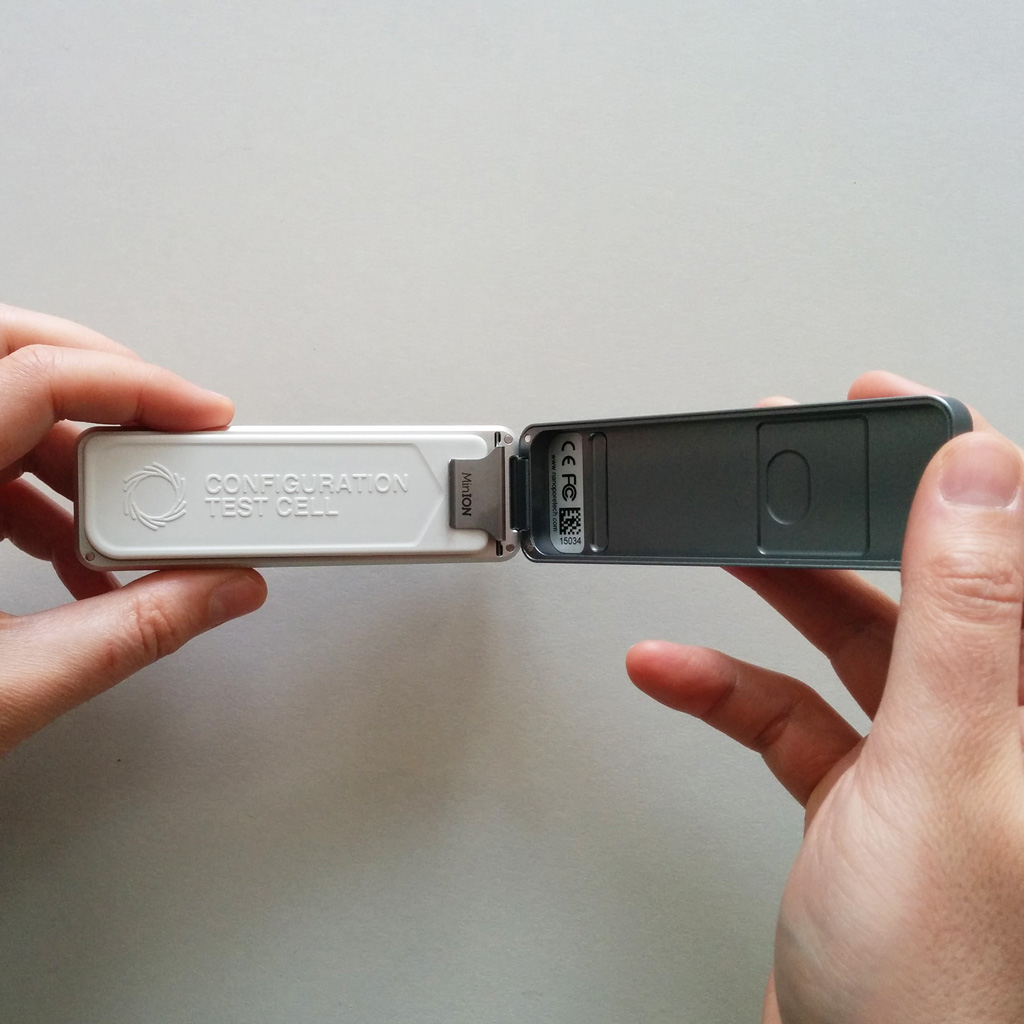
We can’t wait to dive in and explore this new tech, so watch this space to find out what we do with the MinION first!
As promised, last week Apple released the source code for ResearchKit, their framework for building and running medical studies on iPhones. We did some Quick Research on ResearchKit soon after its announcement last month and since its release we’ve spent some time playing with some of ResearchKit’s features.
Along with the ResearchKit Xcode project, Apple has also released the source code for the five launch applications including the mPower app that Max Little, the speaker at the first SP+EE Mobile Health Meetup last week, worked on.
One of the first things to notice when you visit the GitHub repository is that much of the documentation and the ResearchKit Framework itself is written in Objective-C and not in Swift, the latter being a programming language for OS X and iOS that Apple released last year. However, this absence is already being addressed in parts of the documentation and as the framework is in an open source environment it probably won’t be long until the Programming Guide and API are updated to include Swift snippets and references too.
Apple have also included a sample application named ORKCatalog in ResearchKit. The app consists of a list of the pre-built tasks and there is a results tab to view the results of the most recently completed task. From looking through the app it seems that TaskListRow.swift in the ‘Presenting Tasks’ group acts as a good library of the different ResearchKit tasks written in Swift and is also very well annotated.
As part of SP+EE, we have recently worked on a digital healthcare project which involved designing for issues such as informed consent, data collection and leading the user through specific processes. This prompted us to create our own little demo app using ResearchKit so we could try implementing the three main types of task.
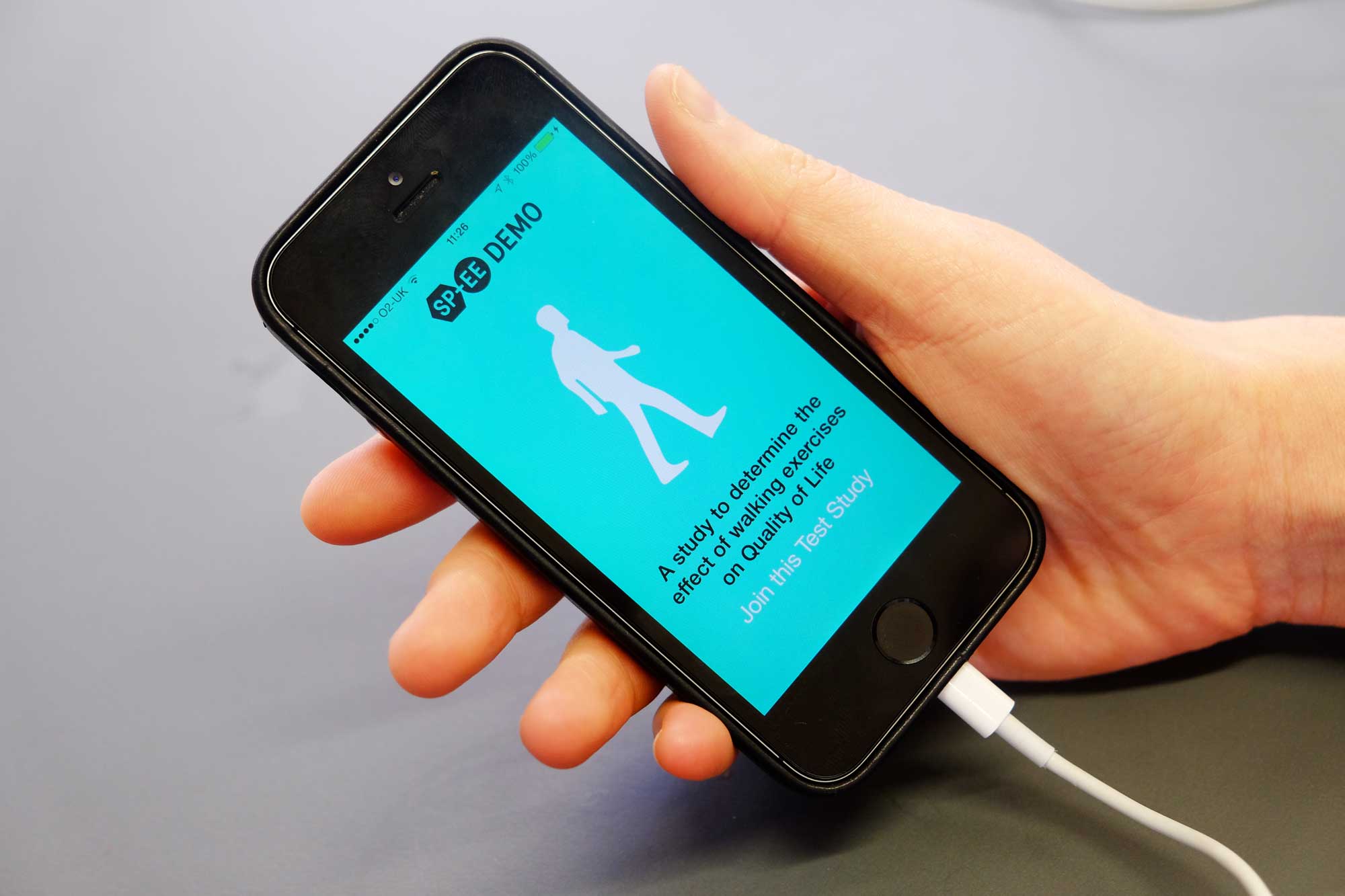
Our Demo Application
Consent Task
Before the user can take part in a study they need give their consent for their information to be collected and used. The framework provides you with a set of pre-formatted consent section types that cover things like how the data is gathered, privacy and withdrawal. These templates have some quite nice transition animations, but these only work if the steps are displayed in a specific order. You can also add a custom consent section type that can be easily configured to add different images and information.
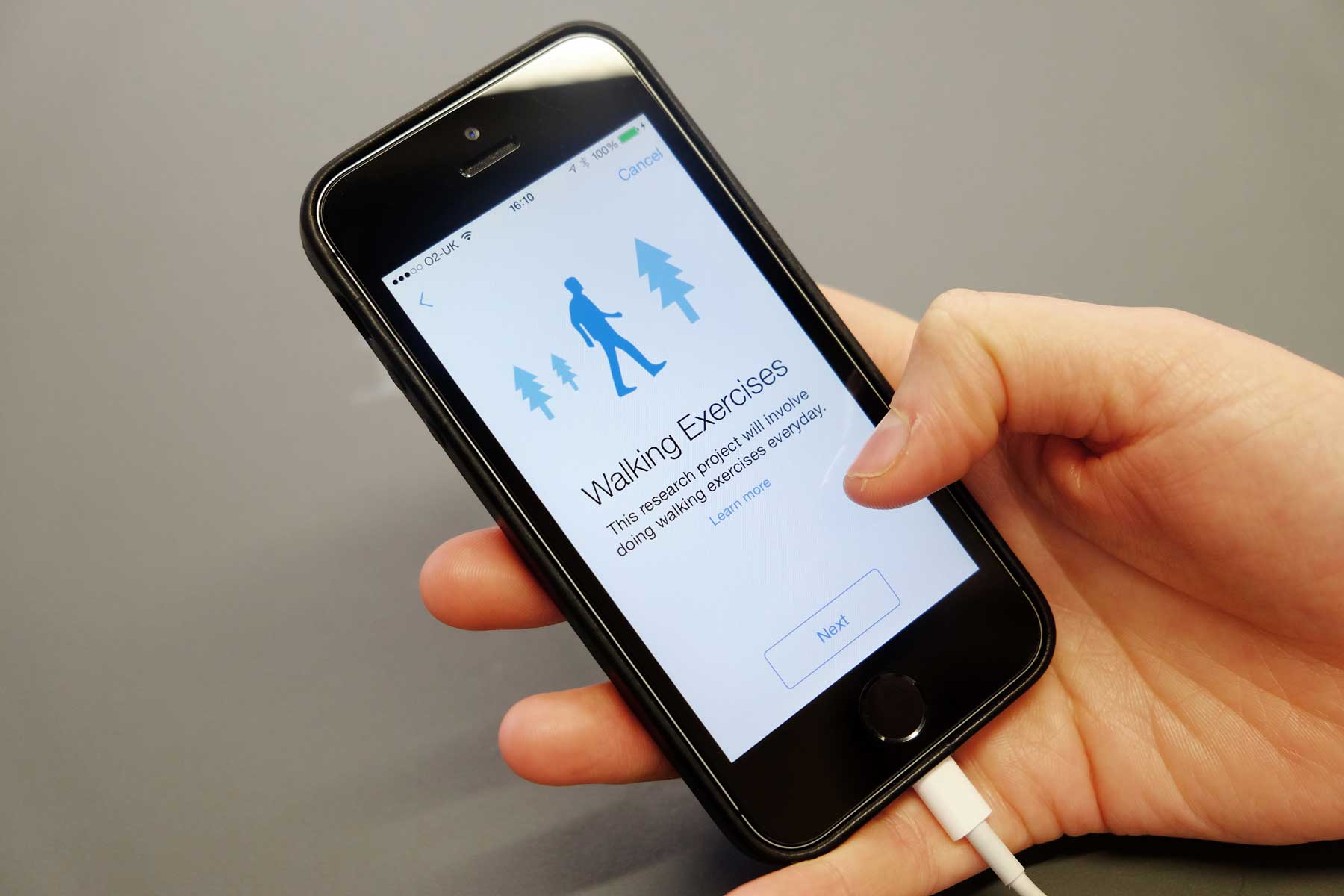
A custom consent section
Overall, it’s very quick to build simple flows and each of the consent sections is compiled to a review step followed by name and signature steps. It will be interesting to see what type of consent models are required as more researchers begin to use this framework for different types of studies. For instance how would the consent process work for a study that looks at the relationship between two people? Other nice pre-built additions might include an eligibility step as seen in the launch applications or maybe a consent step for reminders if a task needs completing at a specific time.
Survey Task
The process for building surveys is pretty simple and again there are number of pre-built designs to collect different types of data. We set up a simple Quality of Life questionnaire that has 13 items and uses the pre-built text choice question which can be formatted to provide single or multiple answers.
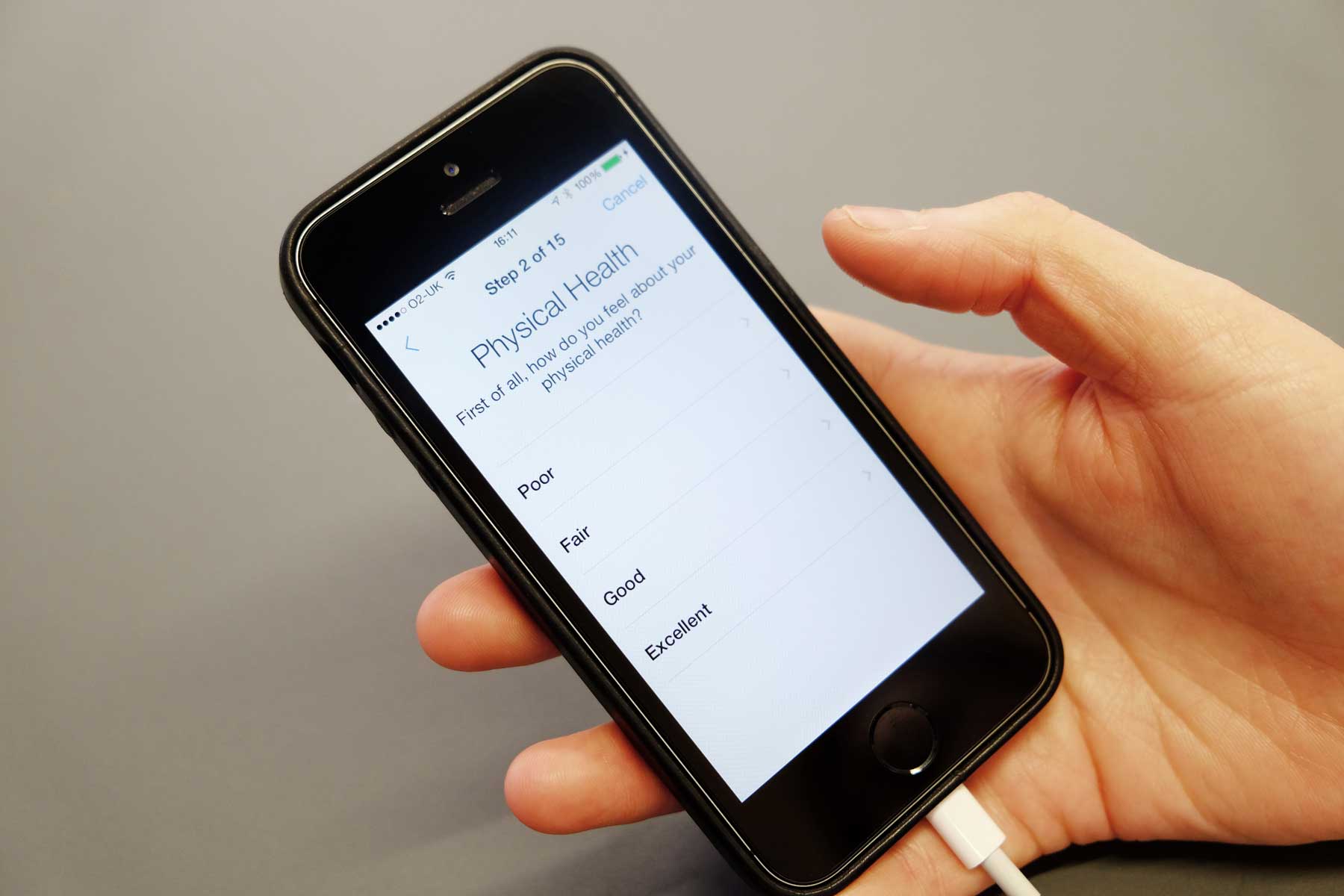
Quality of Life Questionnaire
The results for each task can then be collected on completion and computed into a specific result (a Quality of Life score in this instance). In addition to this, you can also analyse the result of a specific step during the process and have flows that change depending on the answer given by the user, which offers a lot of flexibility.
The fledgling ResearchKit community has already started contributing some new survey answer formats. Giving participants the ability to resubmit previous answers for a task if these haven’t changed might be a helpful function.
Active task
We set up a predefined task to ask the user to walk for five minutes and rest for five minutes, with results being gathered from available sources such as the accelerometer, pedometer, location, and heart rate data (this might be gathered from the Apple Watch when it is released). There are five active tasks that come with ResearchKit but we imagine the library of tasks will grow quite quickly.
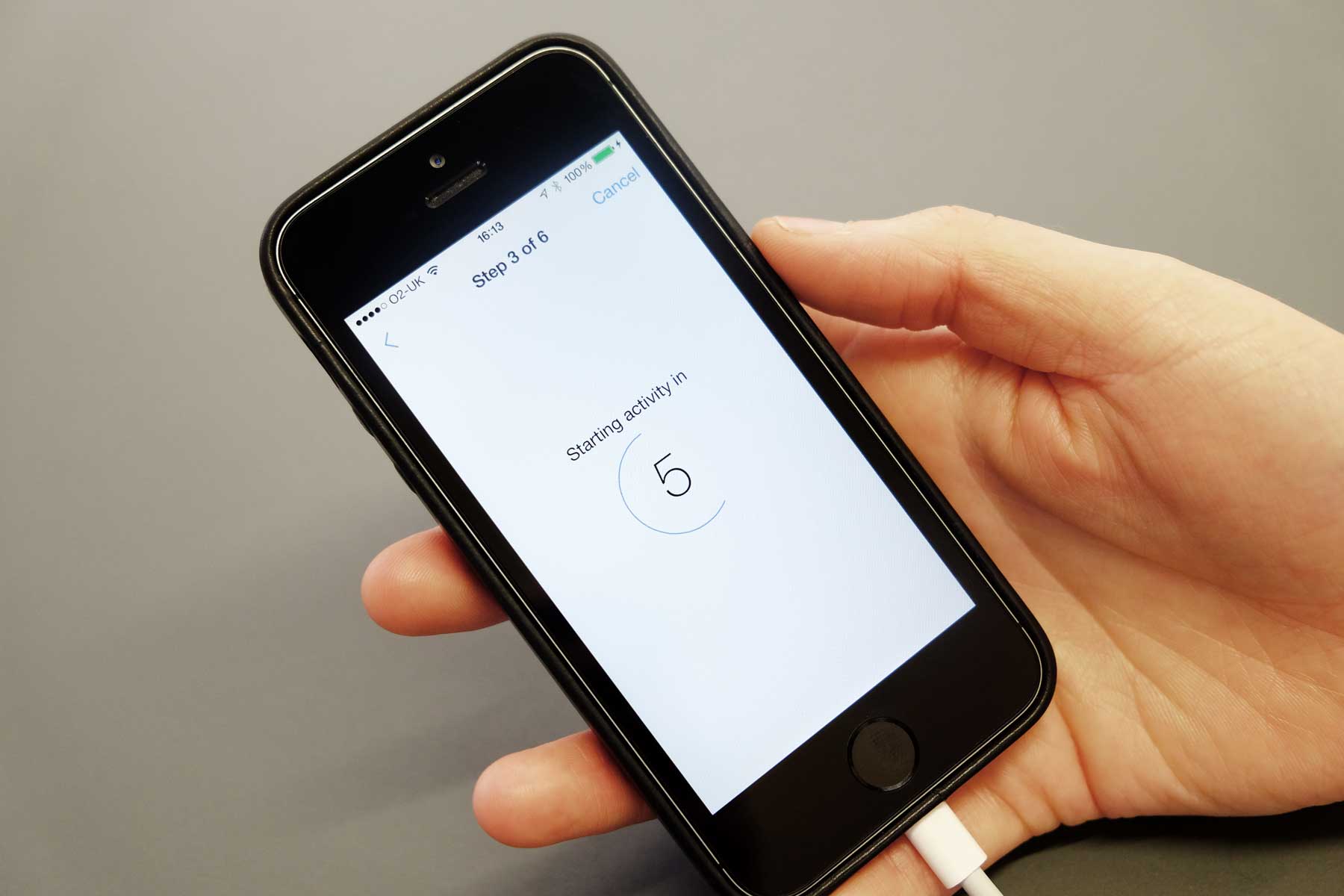
Countdown step in an active task
You can create custom active tasks by defining sub-classes of ORKActiveStep and ORKActiveStepViewController. There are some helpful reusable patterns such as a countdown step, which gives you time to prepare before a task starts, and a completion step, which lets you know that the activity has been completed successfully. Another reusable step that could prove useful might be letting the user know that they have not carried out a step correctly and asking them to retry.
What’s next for ResearchKit?
One thing we haven’t figured out yet is how to set the timing of certain tasks (for instance, a Quality of Life measurement might only need to be taken every six weeks) or how to set reminders for tasks (for instance, remind the user to complete this task every evening), but it looks like these are things that Apple is thinking about and looking to implement in the near future.
ResearchKit seems very well considered and as the community grows it will be interesting to see how it evolves in order to combat common problems and extend it’s reach, more specifically:
-
We have found data privacy and security to be very important and sensitive issues. Apple has left it very much in the hands of the researchers how this data is transmitted and stored after it has been collected. The development of guidelines and best practices would probably be beneficial for insuring data is secured.
-
Controlling attrition rates will be important to ensuring the success of a study. What sort of design patterns will be developed in order to keep participants engaged and contributing rich and useful data?
-
ResearchKit is fairly easy to prototype with but it seems that extending support for Swift programmers will be an important part of making the framework more accessible to a wide pool of potential researchers.
You can look at and download our ResearchKit demo app on the SP+EE GitHub repository. If you would like to chat to us about anything mentioned in this post, you can contact us here or come to our next Mobile Health Meetup!
Great expectations and serious opportunities ahead of us. The 5th annual Eagle Symposium 2015 took place on March 23rd at the European Bioinformatics Institute in Hinxton near Cambridge, and it was about so much more than just bioinformatics.
The main focus of the meeting was on bridging the gap between advances in bioinformatics research and the obvious benefits for human health in clinical or pharmaceutical setting. Speakers represented a whole spectrum of expertise, ranging from policy making to academic research, from clinical practice to commercial pharma industry. A healthy cross-section.
Microbial genomics in healthcare
Sobia Raza (Interim Programme Lead for Science at PHG Foundation) discussed the importance of microbial sequencing in healthcare, which might seem a bit less obvious than sequencing human genomes, but in fact can prove equally important to public healthcare. First of all, Sobia made a very strong distinction between time frames available for investigating genomes in a research and in a medical setting — the former being measured in weeks and days, whilst the latter in minutes and hours. Sobia also stressed the potential importance of microbial sequencing for the effective preservations of antibiotics and tackling antibiotic resistance. We all nodded to one another, recollecting our own research done for the Longitude Prize 2014.
Information integration, sharing is key as pathogen genomics transforms management of infectious disease, Sobia Raza @PHGFoundation #egsym15
— William Spooner (@wspoonr) March 23, 2015Stories of visual debugging
Simon Andrews (Head of Bioinformatics at Babraham Institute) presented a collection of fascinating case studies in lab quality control, when visual evidence gave indication of sequencing going wrong. Catastrophic situations are usually very easy to spot on visual read outs from machines or activity monitors. Subtle mistakes are a bit more difficult, but a keen observer would notice anomalies or surprising features in their data, which would sound an alarm about batch contamination, air blockage in pipings, or even wrong identity of tested samples. But the most difficult cases are those subtle and chronic, which makes them almost invisible to human consideration.
Good Bioinformaticians need bad data. Believe it or not it's harder to get. It helps make good data better #egsym15 pic.twitter.com/99vnhNRYHw
— IvanHK100 (@ivanhk100) March 23, 2015Simon concluded that researchers should share data from failed experiments as much, as they like to share data from successful ones. We really liked Simon’s talk because of his visual approach to quality control in a laboratory, as well as debugging of scientific experiments.
Structure and unstructured patient records
Richard Dobson (Head of Bioinformatics NIHR at King’s College London) focused in his talk on medical records, their importance in genomic context and difficulty in making good use of them. Rich gathered 1/4 million patient records and found that for many diseases up to 90% of relevant and important medical information might be unusable for data mining purposes, because it is recorded by clinicians as free text narrative; only about 10% of patient data is structured and available for database search. This is, obviously, a problem not only in clinical practice, but also in genomic research, as only a fraction of patients’ phenotypic data can be processed for correlations with genomic variations.
"@glyn_dk: .@richdobson It is very difficult to collect good clinical data #egsym15 pic.twitter.com/k688Cld9uF" RD fixes using text mining.
— William Spooner (@wspoonr) March 23, 2015Variation in knowledge about variation
Vincent Plagnol (Head of Computational Biology and Reader at UCL) presented a fascinating study done on London’s Jewish Ashkenazi population. Doing field research and telephone interviews, trawling through patient medical records, sequencing members of families affected by IBD (Inflammatory Bowel Disease) and analysing multigenerational family trees, Vincent and his colleagues found out that often variants are reported to be much more prevalent in populations than they actually turn out to be after closer investigation. This shows really how little we still now about the variation in human genomes.
Vincent Plagnol: A case of #IBD in Jewish population where "missing heritability" explained by complex combination of common variants #egsym15
— Fiona Nielsen (@glyn_dk) March 23, 2015Data virtualisation and data silos
Will Spooner (CSO at Eagle Genomics) introduces Eagle’s new service — Eagle Core. It’s premise is to make best use of hundreds of genomic databases, each siloed in its own storage space, using various standard and legacy technologies. Eagle created Eagle Core to help alleviate this unavoidable fragmentation. Through data virtualisation, Eagle Genomics enable institutions to make better sense and use of the data they already have. We also liked the clarity of the user interface of Eagle Core.
Keynote: more collaboration
Ewan Birney (Joint Associate Director of EMBL-EBI) gave an excellent keynote explaining why exactly institutions such as EBI are instrumental in making good use of genomic data. Because it is thus not just about storage space — it is also about interrogating this same data in a number of ways each time we want to learn something new about ourselves. There is no underlying theory that tells us how biological systems and structures will behave. Each time we want to understand a biological system we need to refer to raw data — there are no shortcuts. And because data is accumulating in an exponential fashion (doubling every 12 months), we really need to advance our abilities to make sense of it.
@ewanbirney gives the #egsym15 keynote on the future of #genomics, data driven discovery and #bioinformatics pic.twitter.com/Mc1ZLpNZYc
— Health eResearch (@HeRC_Farr) March 23, 2015Ewan also called for further collaboration and integration of academic and commercial efforts. The CTTV centre has been established by EMBL-EBI, Wellcome Trust Sanger Institute and GSK to move some of the discovery of drug targets more towards the pre-competitive research environment.
If you would like to learn more about the events of the day, explore #egsym15 on Twitter. There is also a very useful archive of all presentation abstracts on the Eagle Genomics website.
The 5th Eagle Symposium was an inspiring event. We are looking forward to the 6th edition next year when — hopefully — we will be able to celebrate that so much more will have been done to bring us closer to the promise of genomic healthcare for everyone.

